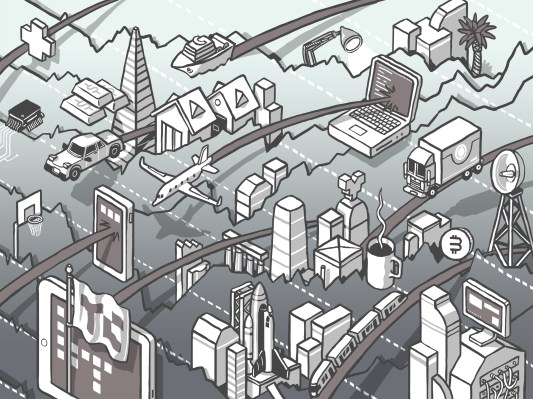Few companies caught as much of a COVID tailwind as U.S. grocery-delivery giant Instacart.
Reporting indicates Instacart’s 2020 revenues roughly tripled to around $1.5 billion. That epic pace of growth helped the company raise a series of large, high-priced financing rounds. In June 2020, Instacart raised $225 million at a $13.7 billion valuation. A month later, the company added another $100 million to that round.
Instacart was not done yet. The company raised another $200 million in October 2020, pushing its valuation up to $17.7 billion. Then, in March 2021, the company added another $265 million in private capital at a valuation of $38.7 billion. That’s a lot of money, and a lot of paper value creation in a very short period of time.
The Exchange explores startups, markets and money.
Read it every morning on TechCrunch+ or get The Exchange newsletter every Saturday.
Then things got a little bit harder for the company. The most recent reporting on the matter indicates that Instacart grew around 10% last year, though with more rapid, 20% growth on a year-over-year basis in the third quarter. This column asked around that time if competitors were cutting into the company’s growth rate. (We can infer that the company’s top line scaled to at least $1.65 billion last year, to put a number on it.)
 Competition is fierce in the grocery space, with Uber and DoorDash working to snag share, and rapid-fire delivery services taking swings at deliveries in the sub-hour time frame. Instacart, however, has a plan to get growth going again, likely boost its blended gross margins, and create a stream of recurring enterprise revenues apart from its best-known business operations.
Competition is fierce in the grocery space, with Uber and DoorDash working to snag share, and rapid-fire delivery services taking swings at deliveries in the sub-hour time frame. Instacart, however, has a plan to get growth going again, likely boost its blended gross margins, and create a stream of recurring enterprise revenues apart from its best-known business operations.
Yes, the company is getting into selling software.
Instacart’s platform play
Dubbed the Instacart Platform, this week the delivery unicorn announced a suite of services that it intends to sell on a modular or group basis to other companies.
The services offered include e-commerce support (digital tools to help grocers build and manage online stores), fulfillment help (Instacart delivery staff and new small warehouses to allow customers to handle super-quick deliveries), advertising tech (offering Instacart ad tech to partner digital retail efforts), analytics, and some in-store tech support.
It’s quite the list, but it’s mostly software services. And we know what that means: High-gross-margin recurring revenue from large customers. The sort of sticky revenue that is less cyclical than grocery delivery more generally, I’d also hazard.
After raising an ocean of capital and scaling its consumer-facing grocery delivery service to the 10-figure range, the company is looking to leverage its technology advantage over the grocery industry as a way to help them digitize. I like it. Why? Because if you can use lower-margin revenues to create higher-margin revenue streams, you can leverage prior work to improve overall business economics.
Which smells like something akin to operating leverage, which is the sweetest form of business result, more or less. So hell yeah to the Instacart software push.
There is, however, a little sticking point.
What about Instacart’s revenue mix?
The move to sell business software by companies whose core operations aren’t the B2B SaaS market is not original. Some media companies are trying something similar. WeWork famously tried to smear some software magic on its otherwise lackluster operations before its IPO failed the first time. Stretching the analogy, Coinbase has built software revenue streams apart from its main trading incomes.
Diversification is good. But if you want to get credit for being a software company more than, say, a media organization or a grocery delivery business, you need to scale your software incomes to the point that they constitute a material percentage of your total top line. Else they are more window-dressing than a fundamental change to your revenue quality.
This is the question for Instacart: How far can it scale software revenues in advance of its own IPO? Put another way, what percentage of aggregate Instacart top line can come from software incomes — from its new suite work, in addition to previous digital incomes — before it files to go public?
Less than 5% probably doesn’t matter, unless the growth rate of that revenue is insanely high. At 10%, thinking out loud, I reckon that things get more interesting. But 10% of $1.65 billion is a lot of software revenues, period. So it won’t be an easy thing to manage.
A nice, bullish case for Instacart could look like a re-acceleration of its grocery delivery business growth and strong software revenue expansion from a modest base. That would be rather valuable. Valuable enough to defend a nearly $40 billion valuation at IPO? Who knows, but it’s far more likely than just going public on the back of its consumer delivery services.
So the Instacart software push seems like a smart move. Our only question is revenue mix, which we’ll get a look at later this year, hopefully, when the company drops an S-1.
Why are we so content to expect a near-term IPO from the company? “Instacart was founded 10 years ago,” CEO Fidji Simo wrote on the company’s blog as part of its most recent announcement cycle. That means the IPO clock really is ticking for this particular unicorn.
